Mongkos Bidayuh Longhouse
A rare glimpse of traditional life in Sarawak
Deep in the heart of Sarawak, close to the Kalimantan border, lies the remarkable Mongkos Bidayuh village.
This rural community, situated 103 kilometres from Kuching, holds something truly special – one of the few remaining traditional Bidayuh longhouses in Sarawak.
The traditional longhouse
Historical significance The Mongkos Bidayuh Longhouse, constructed in the 1950s, represents an increasingly rare example of traditional Bidayuh architecture. While most Bidayuh settlements have transitioned to individual houses, this 24-door longhouse maintains its original wood and bamboo construction, offering a glimpse into traditional communal living arrangements.
The traditional craftsmanship of the longhouse demonstrates the sophisticated building techniques passed down through generations of the Bidayuh community. Its wooden framework and bamboo elements showcase how local materials were skilfully used in traditional construction methods.
Village setting and surroundings
The Mongkos Bidayuh village presents a picturesque rural setting.
Small fruit orchards and vegetable gardens dot the landscape around the settlement, while rice fields stretch across the surrounding area, creating a patchwork of agricultural activity that sustains the community.
The village’s location near the Sarawak-Kalimantan border places it within a region historically significant to the Bidayuh people, who have lived in these borderlands for generations.
The natural environment surrounding the longhouse plays a crucial role in daily life. Traditional Bidayuh agricultural knowledge has been passed down through generations, enabling the community to cultivate the land effectively while preserving local farming practices.
Rural community life
The Mongkos settlement exemplifies a thriving rural community that maintains its connection to traditional practices while adapting to contemporary times. Unlike many other Bidayuh settlements that have completely shifted to modern housing arrangements, Mongkos preserves its cultural heritage through its traditional longhouse.
The preservation of the longhouse structure represents more than just maintaining a physical building – it embodies the continuation of Bidayuh cultural practices and community values. While many Bidayuh communities have transitioned to individual houses, the Mongkos longhouse serves as a reminder of traditional communal living arrangements that characterised Bidayuh society for centuries.
The 24-door longhouse structure reflects the traditional organisation of Bidayuh community life. Each ‘door’ represents a family unit, creating a close-knit community where traditional customs and daily activities interweave with modern rural life.
This unique blend of old and new demonstrates how traditional structures can remain relevant in contemporary society.
Agricultural practices
The agricultural activities surrounding the Mongkos Bidayuh Longhouse play a vital role in community life. Local families tend to their fruit trees and vegetable plots, while the rice fields remain an essential part of their agricultural practices. This combination of farming activities helps sustain the rural community and maintains their connection to traditional agricultural methods.
Sustainable farming The community’s approach to agriculture reflects generations of knowledge about local growing conditions. Their farming practices demonstrate sustainable methods that have evolved over time, allowing them to maintain productive agricultural activities while preserving the surrounding environment.
Traditional cultivation Rice cultivation holds particular importance in the community, with traditional farming methods still in use.
The surrounding fruit orchards and vegetable gardens showcase the diversity of local agricultural practices, providing the community with various food sources throughout the year.
Historical context
The 1950s construction of the Mongkos Bidayuh Longhouse marks a significant period in Sarawak’s history. During this time, many Bidayuh communities were transitioning their settlement patterns, making the preservation of this longhouse particularly noteworthy. Its continued existence offers insights into traditional Bidayuh architectural techniques and community organisation.
Getting there
The Mongkos Bidayuh Longhouse is over 100 kilometres from Kuching. The journey requires navigation through rural roads leading towards the Sarawak-Kalimantan border region.
Due to its location in an active rural community, arrangements for visits should be made through your hotel or tour company before undertaking the trip.
- The long communal area
- Outdoor platforms used for dring gran and other crops
- Rice being dried on a bamboo leaf mat
- The children thugh this westerner a little strange.
- Typical wood and bamboo construction
- Pepper out drying in the sun
- Sorting the dried pepper seed pods
- Each family had their own grain store

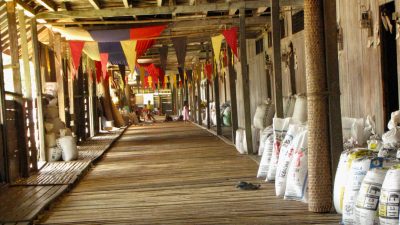
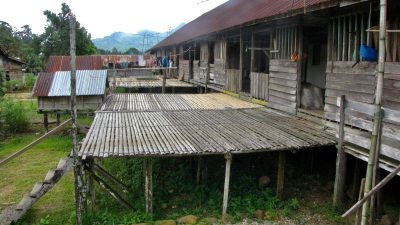
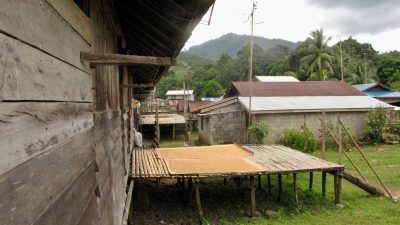
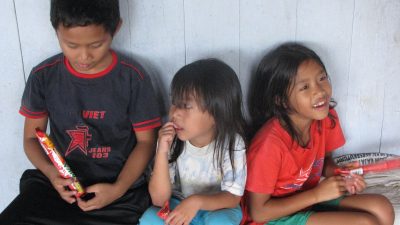
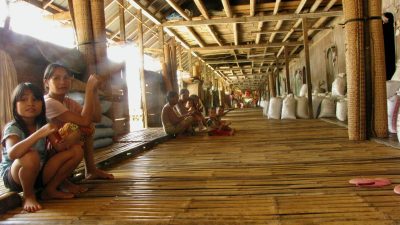
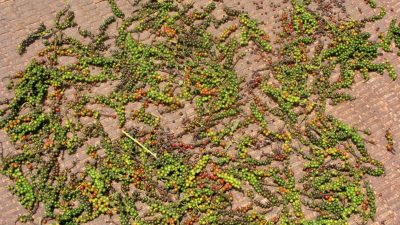
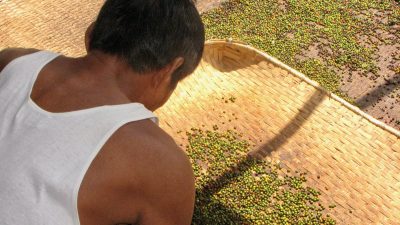
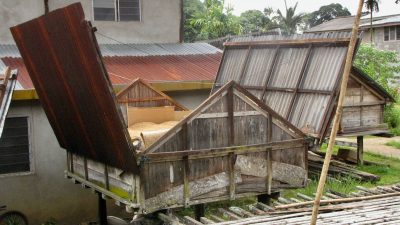
Leave A Comment